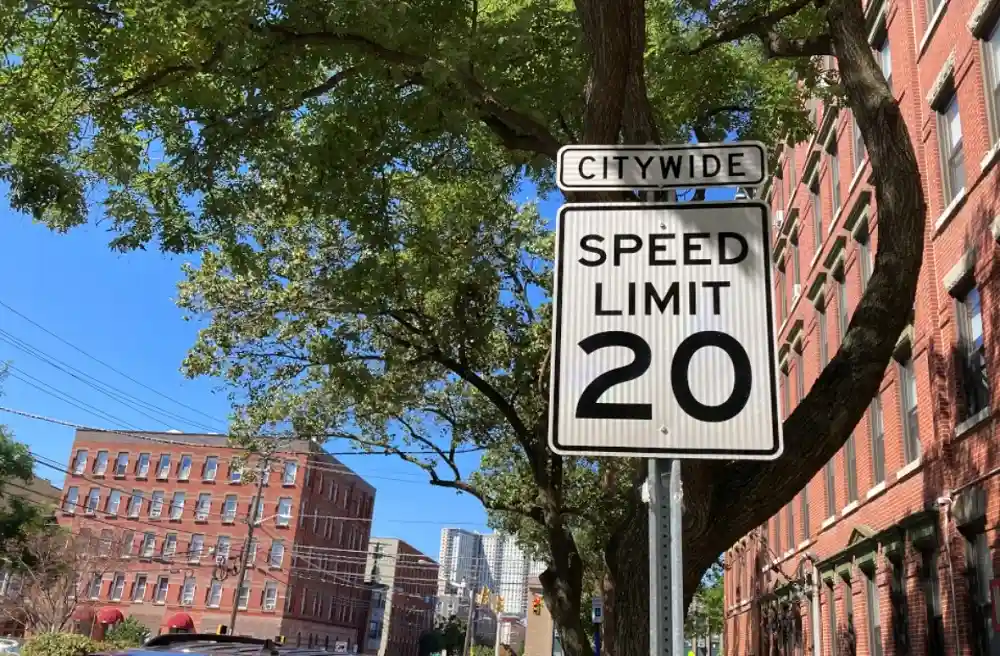New York City’s speed limit may soon drop to 20 MPH, with potential limits of 15 MPH in designated “slow zones” for better traffic control.
Gov. Kathy Hochul signed Sammy’s Law, granting New York City the authority to lower the citywide speed limit from 25 MPH. If approved by the New York City Council, the maximum speed limit would drop to 20 MPH, and as low as 15 MPH in designated “slow zones” to enhance traffic management.

“We’re taking back the streets, making them safer for people, slowing down drivers, and saving lives,” Hochul said at the bill signing. Mayor Eric Adams supports the law, but the City Council must approve any new speed limits first.
New York state lawmakers passed Sammy’s Law in April, named after 12-year-old Sammy Cohen Eckstein, who was struck and killed by a driver in Park Slope, Brooklyn in 2013.
Advertisement
Amy Cohen, an advocate with Families for Safe Streets, has been fighting for a slower speed limit since her son’s death.
“This is a joyous, but bittersweet moment,” said Cohen. “With this legislation, I hope we can learn more children’s names because of their accomplishments, their personalities, and their spirit, not their final moments.”
Hochul emphasized that the city should have always had the power to lower its speed limits without Albany’s permission and believes the new law will reduce the risk of death in traffic accidents.
“Five miles per hour can make a difference between life and death,” Hochul added. Exceptions apply for major thoroughfares in the outer boroughs. “All streets are not the same, and we should not have a citywide speed limit based on one belief or philosophy,” said Adams.
Some New Yorkers doubt that slower speed limits will change driver behavior. “I think New Yorkers will drive how they want,” said Beth Higgins from Park Slope. “They will definitely be speeding past,” said Neisha Worrell from Crown Heights, expressing concerns about road rage.
Under Sammy’s Law, lower speed limits can only apply to roads with fewer than three lanes, but Hochul indicated this could change in the future.
A 60-day public comment period is required before implementing any changes.
